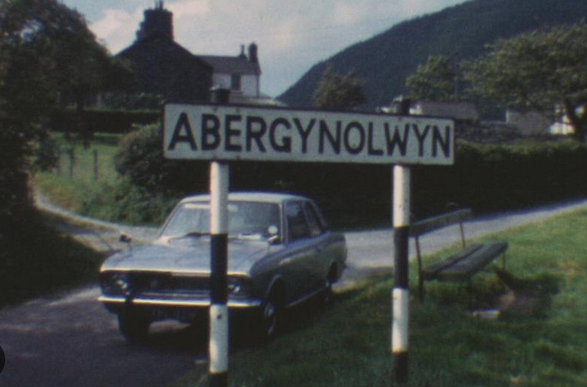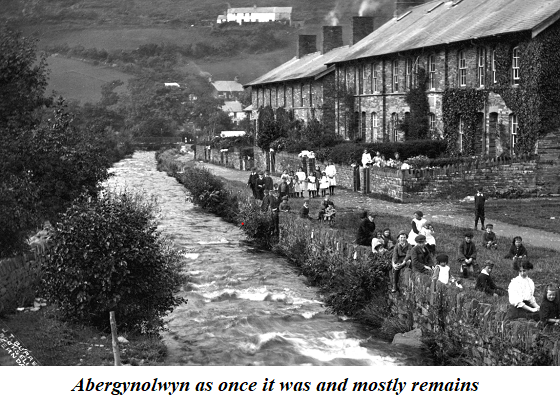
In April 2023 Cyngor Gwynedd (Gwynedd county council) announced that Abergynolwyn, a village with a population of 400 in North Wales, will in future be known by its somewhat obscure relationship with the slave trade. Abergynolwyn is in “the slate landscape of Northwest Wales”—a landscape the United Nations Educational, Scientific and Cultural Organisation (UNESCO) designated a world heritage site in 2021. Gwynedd council manages this landscape on behalf of UNESCO. The village sits at the southern end of Lake Talyllyn in the foothills of the Snowdon massif and beneath Wales’s second-highest peak, Cadair Idris. A nineteenth-century village in the Dysynni valley in Merioneth, it was built to house quarrymen at nearby Bryn Eglwys slate quarry, and “stands close to the narrow-gauge Talyllyn Railway, which served both the quarry and the village”.
As part of what Plaid Cymru council leader Dyfrig Siencyn describes as his party’s “broader mission” to expose the North Wales slate industry’s association with slavery, a plaque advertising the somewhat tenuous link will henceforth adorn the village hall. “Slavery and colonisation form part of the slate story,” a council spokesperson explained.
This report appears in July’s Quadrant.
Click here to subscribe
All of this will come as something of a surprise to the inhabitants of the village. It also came as a surprise to me, who spent his summer holidays as a child with my father’s relatives who formed a kin network of small tenant farmers across Meirionnydd (Merioneth). It would also have shocked my grandmother, Ellen Pugh, who lived in the village. Ellen married my grandfather Daffyd Jones in 1917 at the Horeb Congregationalist chapel in Dolgellau. They farmed a remote sheep farm near Dinas Mawddwy until Daffyd died in 1952 and Ellen retired to 6 Heol Llanegryn, Abergynolwyn (a council cottage, originally built by the Abergynolwyn Slate Company to house workers for its quarry, which opened in 1864). And it’s where she died a century later, in 1964. Ellen profited little from whatever slave trade connections the village had. In her will she left only a Welsh dresser and, as a devoted member of the congregation of the Cwrt chapel, a Welsh bible (Y Beibl) which I still have among my possessions.
But what, if any, was the association between this small industrial village and slavery?
Significantly, in its application for world heritage status, Gwynedd council and the Snowdonia National Park Authority made no mention of any slavery links. Instead they commissioned the buildings historian and urban archaeologist Richard Hayman to write an “urban character study of Abergynolwyn”. Hayman prepared his 2017 study Abergynolwyn: A Character Study “in support of the Wales Slate World Heritage Nomination” submitted to UNESCO.
In his well-researched analysis, Hayman finds that “Abergynolwyn retains a strong and distinctive nineteenth-century character based on its unique combination of topography, economic and social history, and the local natural resources with which its buildings were constructed”. Hayman continues:
Historic character confers identity, creates a sense of belonging and contributes to the quality of the places where we live, work and visit. It can also be an asset for economic vitality and regeneration.
To recover this identity Hayman discloses that John Pugh, a native of the area, initially took a fifty-year lease for quarrying at Bryn Eglwys in 1844. However, “the scale of early operations was inhibited by the problem of transportation”.
It was only in 1864 when William McConnel and his brother Thomas bought the quarry that the landscape was transformed into its current world heritage state. Over two generations the McConnels had established themselves in Lancashire cloth manufacturing. Owners of a cotton-spinning mill in Ancoats, Manchester, they found the American Civil War disrupted their supplies of raw cotton. To offset their losses the brothers shrewdly diversified their business holdings. They bought the Bryn Eglwys quarry in 1864, traded as the Abergynolwyn Slate Company, and formed the Talyllyn Railway Company in 1865 to transport the slate for export. The line to the quarry, which passed above Abergynolwyn village, was built from the coast at Tywyn and opened in 1866. It was the first of the slate railways in North Wales specifically designed for steam locomotives, and from December 1866 was the first of the narrow-gauge railways in North Wales to run passenger services.
The McConnels also built the village to house their workers. William McConnel employed the Manchester architect James Stevens to draw up plans in 1864. The attractive details of the designs, including wedge lintels and overhanging eaves, may still be seen in houses throughout the village. The first houses to be built by the company, between 1865 and 1868, were two terraces of single-storey houses on Heol Llanegryn, where my grandmother later lived.
William McConnel was an outstanding example of the principled Victorian entrepreneurs who forged modern Britain. He developed slate quarrying on an industrial scale to the benefit of his family, his employees and the nation as a whole. As Hayman puts it, he demonstrated “how the influence of capitalist owners extended from the workplace to the home in the nineteenth century”.
Gwynedd council’s proposal to UNESCO promoted Abergynolwyn as “a well-preserved nineteenth-century industrial village with a unique history and strong regional character of special architectural and historical interest”. On these grounds, UNESCO accorded the landscape world heritage status. Indeed, UNESCO was more generous in its praise for the landscape than Hayman in his report. UNESCO considers the site “internationally significant not only for the export of slates, but also for the export of technology and skilled workers”. It “constituted a model for other slate quarries in different parts of the world”, offering a remarkable example of the “interchange of materials, technology and human values”.
By the late nineteenth century, the area around Abergynolwyn produced about a third of the world output of roofing slates and architectural slabs. The use of this slate in terraced houses, factories, warehouses and architecture contributed to rapid global urbanisation. It influenced building styles. “Technologies that were innovated, adopted and adapted in the quarries included the ingenious application of waterpower and the first known application of the circular saw for cutting stone.”
 These technologies were diffused by specialists and by the emigration of skilled Welsh quarrymen to the developing slate industries of the United States, continental Europe and Ireland. Narrow-gauge railway systems like the Talyllyn railway McConnel designed gained global influence and were adopted from Asia and America to Africa and Australasia.
These technologies were diffused by specialists and by the emigration of skilled Welsh quarrymen to the developing slate industries of the United States, continental Europe and Ireland. Narrow-gauge railway systems like the Talyllyn railway McConnel designed gained global influence and were adopted from Asia and America to Africa and Australasia.
McConnel’s achievements in pioneering the modern slate industry whilst preserving the natural beauty of the local landscape earned it its world heritage status. How then does an industry that used Welsh materials and Welsh labour come to be associated with slavery? Here we have to explore the perverse reasoning, economic illiteracy, historically challenged and duplicitous behaviour of Cyngor Gwynedd. In its behaviour it crystallises all the cultural self-loathing that now pervades both the Welsh Labour Party and Plaid Cymru.
McConnel, you see, was English and a capitalist to boot. Such a background is anathema to the cultural Maoists who currently run Wales and micro-manage the Welsh version of the cultural revolution. From this critical perspective McConnel’s achievement must be redescribed to fit an ideology that reduces history to melodrama, where brutal and rapacious English capitalists despoil the Welsh landscape and immiserate its people.
McConnel invested in the slate industry during the American Civil War and the cotton famine that caused the temporary closure of many cloth manufacturing factories across Lancashire. McConnel, like all Lancastrian mill owners, used raw cotton from the plantations of the American South to weave his cloth. The McConnel family owned no slaves and, as good liberals, supported the struggle for emancipation. McConnel, like other manufacturers, did not attempt to break the naval blockade preventing the export of cotton from the South, and suffered financially as a consequence.
However, the mere fact that the major source of the raw material derived from this tainted source (before the empire developed India and Australia as alternative sources of raw cotton) makes McConnel, the Welsh slate industry and the industrial revolution more generally guilty by association.
This of course is tendentious and a deliberate distortion of the historical record. It is not history but ideological posturing that does a disservice to Abergynolwyn and its fascinating past, which needs to be understood on its own terms, not through some anachronistic ideological projection. Whilst such distortion is now firmly entrenched in the Welsh political and educational establishment, the Abergynolwyn case stands out for the thinness of its connection to slavery and the fact that Gwynedd council made no mention of it in its application to UNESCO. It made the application on the grounds that McConnel’s endeavours transformed the locality positively, but after the iconic status had been granted, it then proceeded to rewrite history to suit its own questionable agenda. This is self-serving and mendacious, but such mendacity is meat and drink to the Orwellian enforcers of woke Wales.
David Martin Jones’s most recent book is The Strategy of Maoism in the West: Rage and the Radical Left, written with M.L.R. Smith and published by Edward Elgar last year
 Sign In
Sign In 0 Items (
0 Items ( Search
Search










Maoism? I’m afraid so! But what to do? Is it too late?
If Britain had used the Royal Navy to enforce the principle of free trade, the newly independent Confederate States of America would have been able to defend itself against the Yankee invader, and things would have been very different today.
I don’t know about the rest of you readers but I am sick to the back teeth of this rabble that try to rewrite history to suit their woke agenda. The people of this town should sack their council and glory in the wonderful history they have because of McConnel. Who would want to be associated with such a bunch of people who have accomplished nothing and denigrate those who have.
I wonder if the underpants worn by the forebears of Council Leader Dyfrig Siencyn were made of cotton sourced from slave plantations. If so there should be a plaque attached to his house attesting to his family’s connection to slavery.
.
There is no doubt that slavery, prejudice and its effects are still evident in the U.S. and are to be abhorred. For example, I recently read that the gun homicide rate for blacks is 16.7 per 100,000 whilst for whites it is 1.5.
.
But actions such as those of this hypocritical Welsh Council do nothing to improve the racist impoverishment that blacks in the U.S. are only now climbing out of.
.
Racism in all its forms is to be condemned. That’s why we are voting “NO” at the coming referendum.